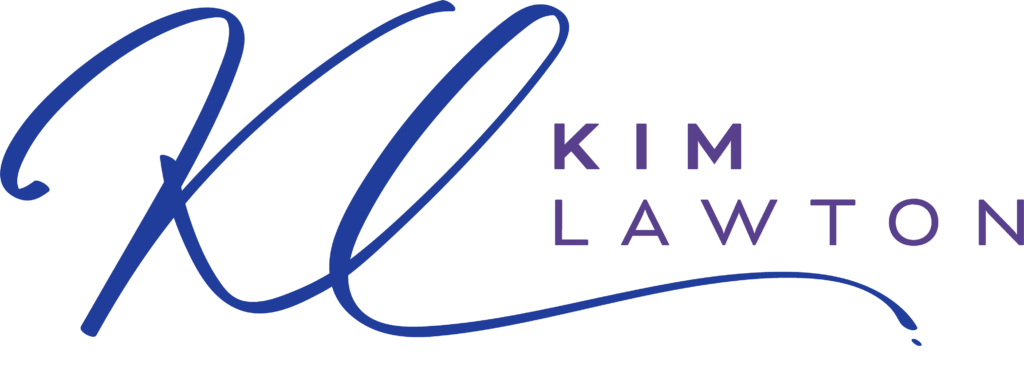How can businesses incorporate smart risks into their decision-making process while minimizing potential downsides? What role does agile thinking play in making smart risks successful in a fast-moving business environment? How can leaders foster a company culture that encourages creativity and smart risks without fear of failure?
Taking risks is essential for innovation, but not all risks lead to success — only smart risks do. This blog explores the delicate balance between bold decision-making and strategic caution, showing how businesses can leverage data, intuition, and agile thinking to drive sustainable growth. By making calculated moves rather than reckless ones, companies can stay ahead of the competition while managing potential challenges effectively. The key lies in understanding when and how to take these risks in a way that aligns with long-term business goals.
Beyond individual decision-making, the blog also highlights the importance of fostering a culture that embraces smart risks. Leaders who encourage experimentation, collaboration, and adaptability create an environment where innovation thrives. Whether it’s leveraging your professional network for insight, learning from failures, or making quick pivots when needed, the ability to take smart risks separates thriving businesses from stagnant ones. If you want to stay relevant in an ever-changing market, embracing calculated risks is not just an option — it’s a necessity.
Let’s be real: If you want to stand out in business, you need to take risks. Innovation is essential to stay ahead of the curve, and you can’t necessarily innovate without risk-taking.
However, these aren’t just any risks. These are smart risks and are a crucial component of marketing operations and any successful business strategy. There’s an art to striking the right balance between making bold moves and staying strategically cautious; finding the sweet spot is your key to sustainable, long-lasting success and growth.
In business, there’s a constant need for decision-making, from small, everyday decisions to bigger, more drastic ones that could have a lasting impact on the business for better or worse. In many ways, your success hinges on your decision-making abilities.
Risk-taking doesn’t always come easily. It can be scary and overwhelming because what if something goes wrong? It’s true that there’s room for failure, though that doesn’t have to be a bad thing or hold you back. That’s why smart risks are so vital. They align with your vision, values, and long-term strategy and can help guide your decisions and risk-taking to ensure you continuously work toward your goals rather than against them.
Table of Contents:
The Importance of Agile Decision-Making
Tapping Into Your Network for Smarter Decisions
The Importance of Agile Decision-Making
No matter your specific industry, the business world moves fast. So not only do you need to make thoughtful decisions day-to-day, but you need to do it quickly, too. In many instances, hesitating or being indecisive can cost you valuable opportunities.
Agile decision-making is essential here. This means being quick yet thoughtful and using data and insights to guide your choices. Nowadays, in a world seemingly flooded with data, it’s easier than ever to tap into a catalog of valuable information to drive your decisions. This can include market trends, customer feedback, performance analytics, and social media engagement metrics.
However, agility doesn’t mean you should throw your intuition out the window. In reality, the smartest decisions are actually made with a combination of data and experience. Data gives you the facts and numbers you can rely on, while your experiences and intuition add more nuance, empowering you to make the best possible choices for your business. For example, if you just review the data, it may tell you option A is the best course of action. But when you tap into your intuition and your business’s nuances, you may find that option B best aligns with your overall strategy.
Being agile is defined as being ready and able to move with quick, easy grace. You need to make decisions about the smart risks you’re going to take with confidence. Confidence is crucial for any business leader, as it allows you to make bold, innovative choices without second-guessing yourself.
Moving with confidence doesn’t mean you’ll never make mistakes. Quite the opposite is true. However, what matters most is how you learn from them and adapt.
Tapping Into Your Network for Smarter Decisions
As a business leader, sometimes it can feel like you’re on your own, forced to make all decisions solo. That’s not the case, though. In fact, research shows that collaborative leaders are more likely to develop more agile, innovative, high-functioning teams than those who take a more isolated approach.
The best decisions often come from leveraging your network. Think of yourself as a connector. You don’t need to be an expert in every topic area; you just need to know the right people to seek quick advice from and connect with them. A simple phone call or a quick message can make all the difference in guaranteeing you have the assurance and support needed to follow through on your decisions and feel like you’re on the right track.
Crowdsourcing insights in this way helps foster a more collaborative environment where everyone can lean on each other and feel comfortable asking for advice when they need it. Some leaders may be weary of this approach, thinking they could relinquish control of their business decisions if they ask for advice or guidance too often.
While gathering feedback from trusted advisors is important and valuable, the final call in any decision is still yours. You’re the one who knows your brand, vision, and business goals the best, so you’re the one who has to make the final decisions. Think of your network’s insights as support to help give you a confidence boost in your decision-making and smart risks. They’re not replacing your authority or compromising your abilities as a leader.
Building a Culture of No Fear
One of the best things you can do for your business is to build a culture of no fear. The fear of failure can be paralyzing in business and your personal life. Think of how many times you’ve talked yourself out of a situation or tried something new simply because you were afraid. Whether it’s fear of the unknown, fear of making yourself look silly, fear of judgment, or fear of what the outcome will be, this fear significantly stifles innovation and creativity.
Innovation thrives on experimentation and fearlessness. There’s a great episode of McKinsey & Company’s Inside the Strategy Room podcast that discusses the human barriers to innovation — fear being one of them — and how to overcome it. The hosts and guests discuss that the risk and ambiguity inherent to innovation make employees and leaders shy away from it. This is why leaders at the top need to overcome their fears to encourage employees to embrace risk-taking — so long as they’re smart risks. This is a culture change that has to start from the top.
Teams should be encouraged to experiment and explore new ideas. It’s up to leadership to make it clear that failure isn’t defeat and doesn’t mean their work wasn’t good or that they’re a bad employee. Instead, it should be framed as an opportunity for learning and growth. Setbacks are part of the innovation process and open the door to new developments and possibilities. When teams know they can experiment and take risks without fear of judgment or penalty, they’re more likely to push boundaries and develop incredibly creative solutions.
Shift your perspective to think of failure as a “fail fest.” Every failure is an opportunity to learn, iterate, and grow. Failures are stepping stones on the winding path toward bigger, better innovations. When you shift your mindset, failure goes from being something to fear to becoming an exciting opportunity. A risk-positive culture of no fear is where creativity and executive decision-making thrive.
Turning Ideas Into Action
Brainstorming and idea sharing with your team is fun and a great way to bond over shared goals. You can talk for hours and have meetings after meetings, sharing your thoughts, generating new ideas, and taking notes on what you could do differently in the business. It’s very easy to get stuck in this brainstorming loop, though. Often, teams will meet and discuss new strategies and ideas but never take action.
Innovation requires moving from the thinking stage to the doing stage, and this is where many businesses can get hung up. This stalled progress can happen for various reasons, whether it be funding restraints, a lack of bandwidth, or even fear that’s keeping your team from trying something new. Whatever it is, it has to be overcome. Otherwise, you risk missing out on incredible opportunities to improve your business dramatically. Plus, if you never change or try new things, your company’s growth will be severely limited, leaving you behind as your competition continues to iterate.
When your team feels like they’re onto something with a new idea, it’s time to start testing it. The testing phase doesn’t have to be perfect. There can still be parts of the idea that need to be fleshed out, and the initial feedback and experimentation during testing will help you refine it. Testing an idea is a smart risk, particularly if you start small. This could be through pilot programs, beta testing, or small-batch product releases — anything that will help you gather data early on to evaluate its reception and then refine and scale the project confidently as you move throughout development.
Deciding to take action and test an idea helps you validate it. During this stage, keep an eye on early signs of success or failure. For example, if you’re testing a new product, pay attention to how the market reacts. Are customers engaging with the new product? What are they saying about it on social media? What’s the demand like? Did you sell out immediately, or is no one biting? These early indicators during the testing stage can help you decide whether it’s worth moving forward with the idea or perhaps you need to pivot or abandon it altogether. At any rate, you won’t know until you try.
The Art of Quick Pivots
Sometimes, you may have to pivot quickly when testing a new idea. Innovation and risk-taking don’t always go as planned. That’s OK, though. One of the most valuable skills in taking risks is knowing when to adapt, iterate, or abandon the idea if it’s not working. The ability to make changes quickly and strategically is a skill that separates successful innovators from those who are stagnant and hesitant to embrace change and creativity.
Consider embracing the “fail fast, fail forward” philosophy. This is essentially the concept of “learning by doing.” The basis is that you will encounter failures, but what matters most is your ability to move forward quickly without letting them set you back or extinguish your fire. When you fail forward, you use your failures as learning experiences to help you continue moving toward your goals. Conversely, when you fail backward, you’re spending too much time wallowing in what didn’t work, or even feeling sorry for yourself or blaming outside forces for why the risk didn’t pay off. Truthfully, this is a waste of time and stands in your way of making a real breakthrough.
The art of pivoting is a crucial skill for business leaders to master to drive innovation, smart risk-taking, and better decision-making. It requires a combination of quick thinking, strategic foresight, confidence, and fearlessness to course-correct when needed and move forward without hesitation. Small, controlled risks can often lead to big wins, especially if you open yourself up to the lessons learned along the innovation process. When you’re open to change and creative problem-solving, you may find opportunities for success in the most unexpected places.
Conclusion
Creative, innovative businesses thrive on taking smart risks. Leaders must be agile, leverage their network, foster a fearless culture, and understand when and how to pivot. The business world is ever-changing. If you’re resistant to change, you risk falling behind and losing customers, whereas the most successful businesses make quick, iterative decisions to test new ideas and adapt on the fly.
For many businesses, taking innovative, smart risks and making stronger decisions requires a mindset shift. Instead of fearing failure and resisting change, embrace the prospect of failure as an exciting opportunity to learn, grow, and take the business to the next level. Taking bold yet calculated risks is your ticket to becoming a shining example in your industry and a go-to business for customers.
Next time you’re faced with a decision, remember to be agile and adaptable, check in with your network for advice, and be ready and willing to make changes and learn as you go. After all, the greatest innovators and businesses are those who take smart risks and innovate toward their next big breakthrough. Innovation is a journey; you won’t get anywhere if you keep still.





